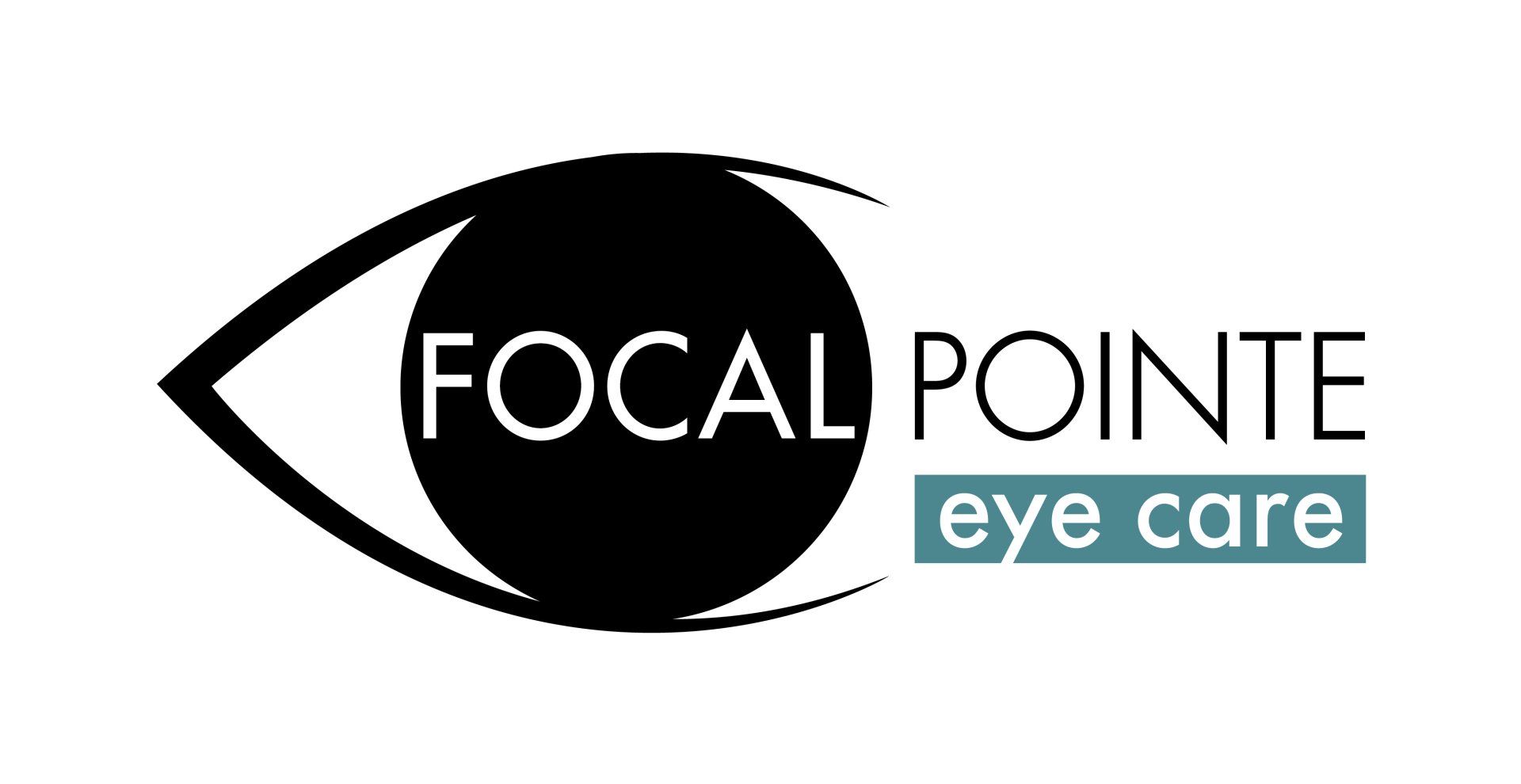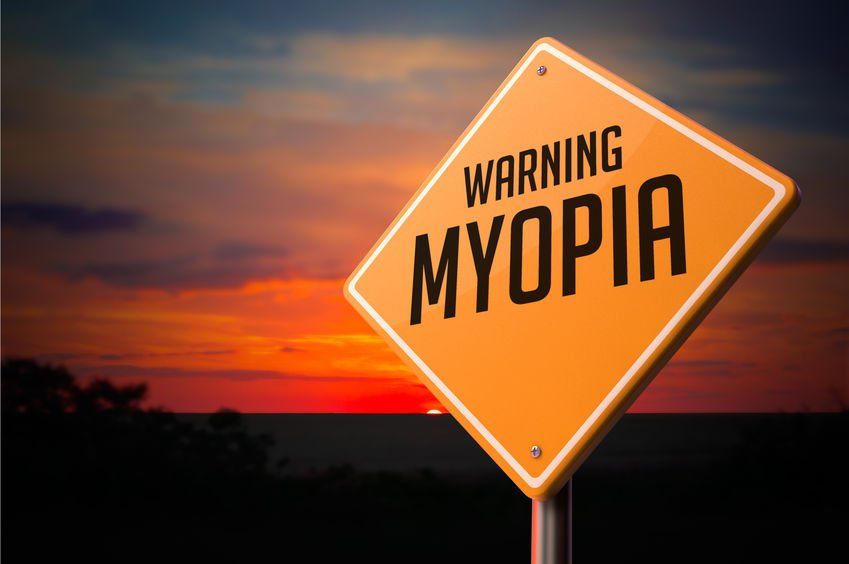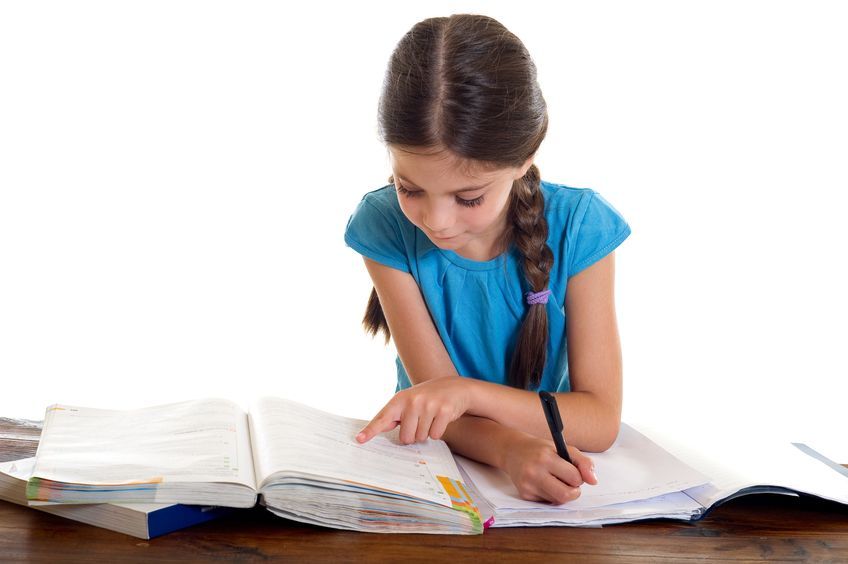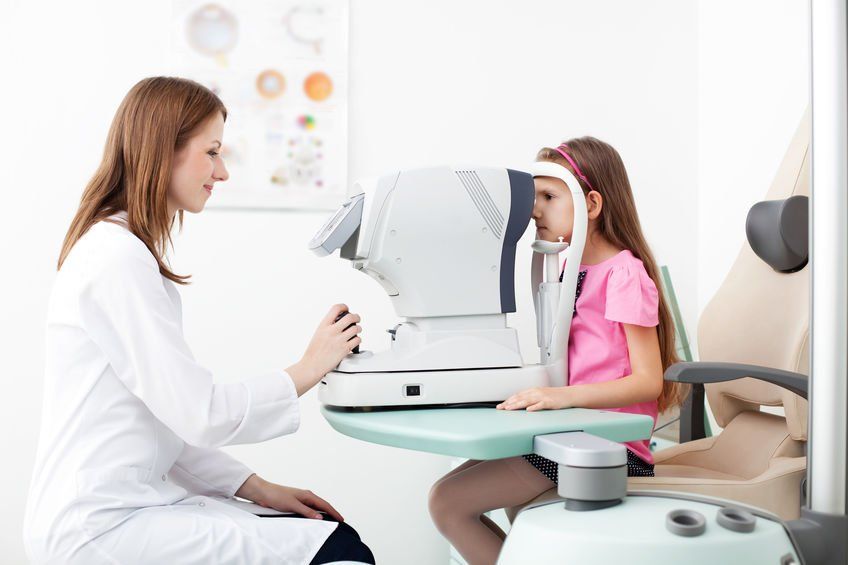
FOCAL POINTE BLOG
Button
Progressive Myopia - Concerning increase in children
What parents need to know
Myopia, otherwise known as nearsightedness, is a fairly common eye condition for adults and children. Unfortunately, it has become far too common among children in the last 20 years and is actually threatening the future health of kids. As parents, we do all we can to help and protect our kids and often that starts with knowledge. This is one blog post every parent of young children should read.
What's the concern?
Ideal eyesight is 20/20 and many people have 20/20 vision without the need for glasses or contacts. When you can clearly see things up close but not far away, it is called nearsightedness or myopia. Myopia is typically easily corrected with glasses or contacts.
In the last 20 years, we have seen an increase in
a condition called progressive myopia among school aged children.
This means the degree of nearsightedness increases rapidly, resulting in severe or high myopia.
What is progressive myopia?
For the sake of illustration, let's say that a normal eye is round.
As a child grows, their eyes also grow and the shape of the eye can change. Nearsightedness occurs when the surface of the eye elongates or lengthens.
With progressive myopia, the eye surface continues to stretch, resulting in ever worsening vision. If a rubber band is stretched too far, it may snap. Similarly, if the eye stretches too far, it can result in retinal detachment.
What are the risks of progressive myopia in children?
The biggest risk is the quality of future vision, as progressive myopia presents increased risks for vision threatening conditions at ever younger ages. Some of the specific risks include:
- Retinal detachment
- Glaucoma
- Cataracts
Why is this happening?
Studies conducted over recent years have suggested a couple of reasons to explain the increase in progressive myopia among children.
- Increased academic rigor - ABC News in Australia reported a study that found a higher rate of myopia in children attending academically selective schools compared to normal school populations.
- Increased use of technology - compared to twenty years ago, children are interacting with more types of technology more often. This includes electronic games, laptops, computers, tablets, smartphones and other handheld technology. As technology has improved, it has become more personal and is being used at ever closer distances.
- Decrease in outdoor time - concerns over unsupervised child safety are different today than 20 years ago. When combined with access to technology, time spent playing outdoors has decreased.
The studies concluded that time spent outdoors allows eyes to benefit from improved light and the ability to focus at distance.
What parents can do for children
The good news is there are many things parents can do to help minimize or even eliminate the risks of progressive myopia for their children.
- Reading articles like this is a great start. We even encourage you to share this with other parents.
- Next, be sure to schedule an annual eye exam for children. It is important to have a baseline measure of their vision as early as possible to make it easier to detect changes. You can find recommended examination frequency guidelines from the American Optometric Association located on our children's eye exam page.
- Many eye conditions are controllable or curable when diagnosed early, and progressive myopia is one of those conditions.
- Watch for signs of changes in vision. A list of common signs of vision change can be found on our children's eye exam page.
- We also suggest monitoring and limiting technology use for children in three ways: frequency of use, length of use and time of use. The time of use is also important because the blue light emitted from technology can disrupt normal sleep patterns and cause other problems.
- Offset technology time with time spent outdoors.
A medical study in Great Britain followed 7,000 children aged 8-9 years old and found that those who spent little time outdoors were 40% more likely to develop myopia than those who spend 3 or more hours outside in the summer and at least 1 hours in the winter.
In an Australian study named the Sydney Myopic Study, 4,000 school aged children were assessed. Professor Kathryn Rose, head of orthoptics at University of Technology Sydney, which led the study, said "An eye that's myopic is an eye that's growing too fast, too quickly and what we are actually thinking may be occurring is that when children spend time outdoors they are getting enough release of retinal dopamine to actually regulate the growth of their eye."
Time outside may not be enough
While spending time outdoors can have many health benefits, that alone may not be sufficient to prevent myopia or slow its progression for some children. Fortunately, there are other controls that have proven effective. Those include:
- Orthokeratology aka Ortho-K. Similar to how orthodontics are used to align teeth, with Ortho-K the patient wears special contact lenses while sleeping to help mold the shape of the eye. Most patients are then able to see 20/20 and stop using glasses or contact lenses during waking hours. In addition to providing immediate vision correction, when used at the right ages, Ortho-K can slow, stop or even reverse the effects of progressive myopia and thus the associated risk for other eye diseases. Learn more about Ortho-K lenses.
- Medication - Eye drops containing atropine used once a day have been found in studies to slow the progression of myopia, but this is not considered a cure.
- Contact lenses - Distance center multifocal soft contact lenses are worn just like normal contact lenses but have more than one focal zone. Several studies found these lenses effective in slowing the progression of myopia.
- Specialty eyeglasses
- bifocal and multifocal eyeglasses can be an option for patients with eye-muscle positioning challenges and may be more appropriate for young children not suited for contacts or eye drops.
What to do next
Did you know that nearly 80% of what a child learns is captured visually? If they are struggling to see, it is likely to affect their grades, their sports performance and even their behavior.
As we mentioned earlier, scheduling a regular eye exam can be the single most important action a parent can take to help their child perform at their very best.
If you are in the Cincinnati metro area and want to schedule an eye exam for your child, give us a call or text at 513-779-3937.
Dr. Michael Lyons is the Founder and Owner of Focal Pointe Eye Care in West Chester, Ohio. As a leading optometric practitioner of Orthokeratology for children, Dr. Lyons successfully applied Ortho-K for his then 8 year old son who achieved 20/20 vision within 3 days of beginning treatment. Read more about his son's journey here.
CONTACT US
GET IN TOUCH
Website Footer Form
Thank you for contacting Focal Pointe Eye Care. A member of our team will review your inquiry and respond to you within one business day.
Contacting us on the weekend? Most inquires receive a response on Monday afternoon.
If your need a faster response, please call us at 513-779-3937 during regular business hours.
If you have an eye emergency, please call our phone number and listen for instructions.
Please try again later
Office Hours:
M: 10:30am-5:00pm
Tu: 9:00am-5:00pm
W: 9:00am-5:00pm
Th: 9:00am-5:00pm
F: 9:00am-3:00pm




